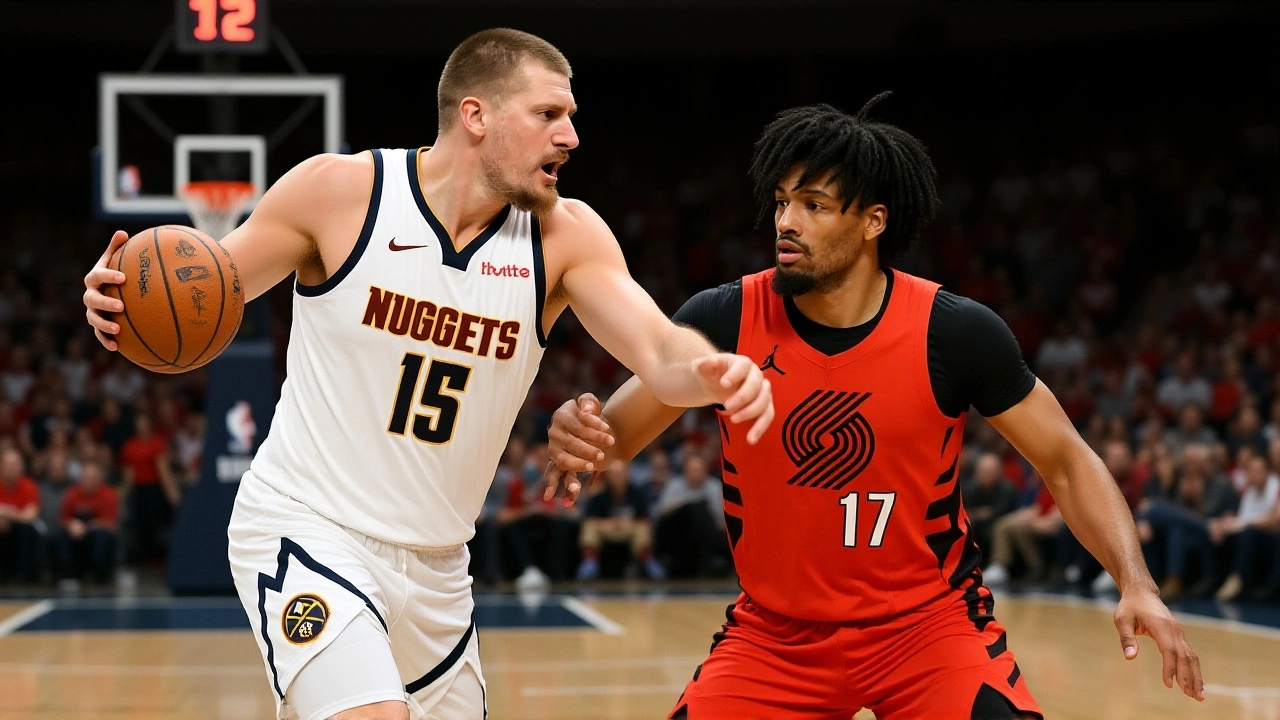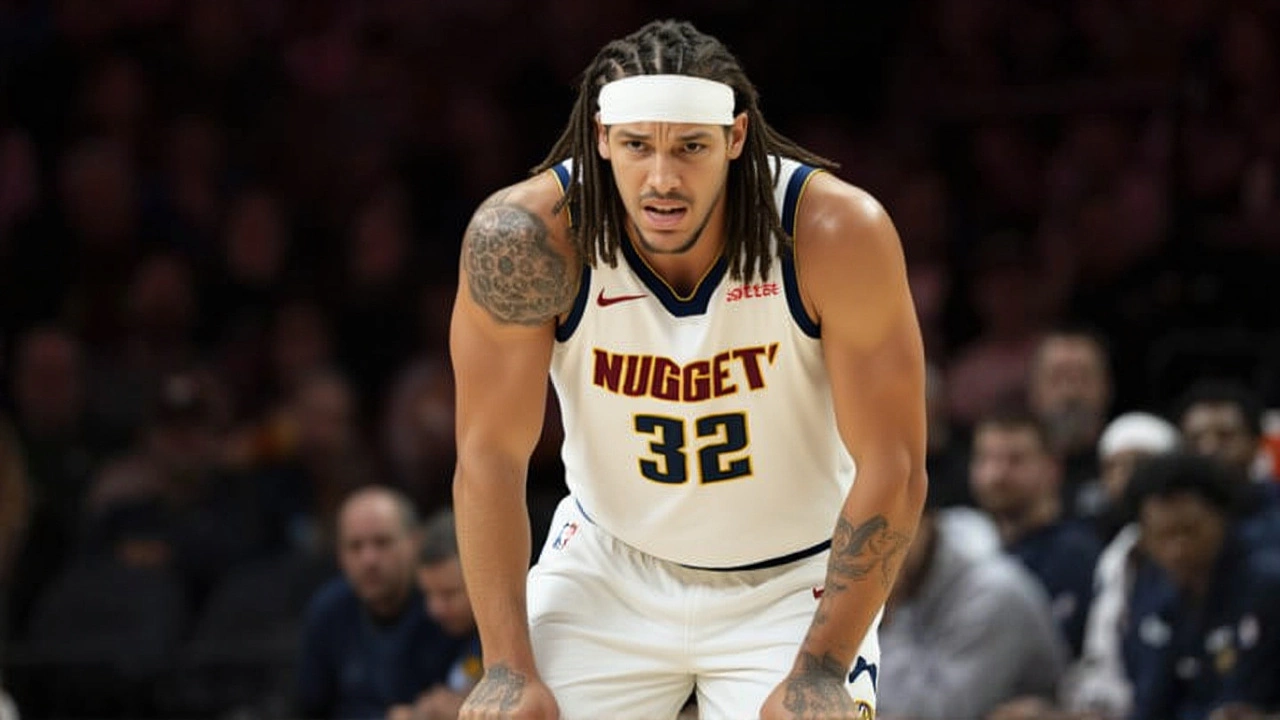When Aaron Gordon collapsed mid-court during the Denver Nuggets’ NBA Cup game against the Houston Rockets on November 22, 2025, it wasn’t just another injury report—it was a seismic shift for a team already teetering on the edge. The 29-year-old forward, wearing jersey #32 for the Denver Nuggets, suffered a Grade 2 right hamstring strain, sources confirmed to ESPN’s Shamsuddin Shah Charania the next day. The injury came just as Gordon was returning from a nagging calf issue that limited him to only 51 games last season. Now, he’s facing a timeline that pushes his return well into 2026. The Denver Nuggets, headquartered at Ball Arena in Denver, Colorado, are suddenly without two key defenders—Gordon and fourth-year guard Christian Braun, who’s sidelined with a severe ankle sprain.
Another Soft Tissue Blow for a Fragile Star
Gordon’s injury isn’t random. It’s part of a pattern. He missed 31 games in the 2024-2025 season due to a right calf strain that flared up in early November. Now, just over a year later, the same leg gives out again. Interim head coach David Adelman, stepping in while Michael Malone recovers from undisclosed health issues, admitted during a November 23 press briefing in Sacramento that the team is "trying to make sure we get the correct answer." Gordon is consulting multiple specialists, a sign the Nuggets are terrified of rushing him back. The initial ESPN estimate of a December 1 return? "Unlikely to stand," according to Heavy.com. This isn’t just about healing—it’s about avoiding a recurrence that could derail his prime years.Defensive Chaos in the West
Gordon wasn’t just a scorer. He was the Nuggets’ Swiss Army knife on defense. At 6’8”, with 7’1” wingspan and elite lateral quickness, he could guard everything from point guards to power forwards. With him out, the Nuggets’ perimeter defense collapses. Denver Nuggets lost 128-123 to the Sacramento Kings the day after his injury, with bench wings Bruce Brown Jr. and Tim Hardaway Jr. combining for 5-of-22 shooting. Peyton Watson, 22, is now thrust into a starting role he’s never played. Spencer Jones, Zeke Nnaji, and DaRon Holmes II—all young, all unproven in high-leverage moments—will shoulder more responsibility. That’s a lot to ask of players who haven’t even started 10 games combined in the NBA.The Financial and Strategic Fallout
Gordon’s $32.99 million salary for the 2025-2026 season makes up nearly 23% of the NBA’s $144.9 million salary cap. He’s not just a player—he’s a financial anchor. Losing him means Denver can’t just trade for a replacement; they’re stuck with his cap hit while watching their title hopes slip. The Nuggets, valued at $3.38 billion by Forbes, aren’t in rebuild mode. They’re in survival mode. With Nikola Jokić still elite but aging, and Jamal Murray’s health always a question, this isn’t a minor setback—it’s a potential season-derailing event. The medical team, led by Head Team Physician Dr. Richard Ferkel, is now coordinating with outside orthopedic specialists to determine whether PRP injections, stem cell therapy, or extended rest is the right path.
What’s Next for the Nuggets?
Denver’s next game is November 25 against the Minnesota Timberwolves at Target Center. Without Gordon, they’ll rely on zone defenses and Jokić’s ability to cover for mistakes. But the Wolves have Anthony Edwards, who thrives in transition—and Gordon was the one player who could slow him. The Nuggets’ front office is reportedly monitoring the trade market for veteran wings, but options are slim. Teams aren’t giving up talent for a 29-year-old with a history of soft tissue injuries. The only real hope? That Watson, Jones, and even Nnaji can elevate their games faster than anyone expects.History Doesn’t Favor a Quick Return
In the past decade, only 12% of NBA players with Grade 2 hamstring strains returned within four weeks. Most took six to eight. Gordon’s previous calf injury took seven weeks to heal—and he re-aggravated it twice before fully recovering. The Nuggets know this. That’s why they’re not rushing. They’ve seen what happens when teams push too hard: think Paul George in 2021, or Kawhi Leonard’s recurring quad issues. Gordon’s legacy isn’t just about stats. It’s about durability. And right now, durability is the question.
What This Means for the Northwest Division
The Northwest Division is now wide open. The Minnesota Timberwolves, Portland Trail Blazers, and Oklahoma City Thunder all have a shot. Without Gordon, Denver’s defense loses its glue. They’re no longer the team that can switch everything. They’re vulnerable. And in a conference where every game matters, that’s dangerous.Frequently Asked Questions
How long is Aaron Gordon expected to miss, and why is the timeline uncertain?
The Denver Nuggets are projecting a 4-to-6 week recovery for Aaron Gordon’s Grade 2 hamstring strain, meaning he won’t return before late December 2025 or early January 2026. The timeline is uncertain because Gordon has a history of recurring soft tissue injuries in the same leg region, including a right calf strain that cost him 31 games last season. The team is consulting multiple specialists to avoid re-injury, making a rushed return too risky.
Who will replace Aaron Gordon on defense?
Fourth-year wing Peyton Watson, 22, is expected to take over as the primary perimeter defender, with Spencer Jones, Zeke Nnaji, and DaRon Holmes II seeing increased minutes. None have the size, experience, or versatility Gordon brings. Watson has shown flashes but has never started more than 12 games in a season. The Nuggets’ defense, which ranked 7th in the league last year, has already slipped since Gordon’s exit, allowing 128 points to Sacramento without him.
How does Gordon’s injury affect the Nuggets’ title chances?
With Gordon out, Denver’s championship window narrows significantly. He was their best perimeter defender, crucial for covering stars like Anthony Edwards and Jayson Tatum. Combined with Christian Braun’s ankle injury, the team now lacks depth on the wing. While Nikola Jokić remains elite, the Nuggets’ supporting cast is stretched thin. Analysts now rate their playoff odds at 35%, down from 62% before the injury.
Is there a risk of a long-term career impact for Aaron Gordon?
Yes. Repeated hamstring and calf injuries in the same leg increase the risk of chronic tightness, reduced explosiveness, and even tendon degeneration over time. Players like Carmelo Anthony and Paul Pierce saw declines after similar injury patterns. Gordon, at 29, is entering the phase of his career where durability matters more than ever. If he misses significant time again, it could shorten his peak years and reduce his long-term market value.
What’s the financial impact of Gordon’s absence on the Nuggets?
Gordon’s $32.99 million salary makes up 22.8% of the NBA’s 2025-2026 salary cap. The Nuggets can’t trade him without taking on bad contracts, and they can’t cut him without a $10 million cap hit penalty. That means they’re locked into paying him fully while he’s out, with no realistic way to replace his production. It’s a financial burden on a team already spending near the luxury tax threshold.
Could the Nuggets make a trade before the deadline?
Unlikely. Teams are wary of trading for a player who’s already injured or has a history of soft tissue issues. Denver’s best assets—draft picks and young players—are tied to their future. With Gordon and Braun both out, they’re more likely to stand pat than risk destabilizing their core. Any move would require a team desperate for a veteran wing, and right now, few are willing to pay that price.
